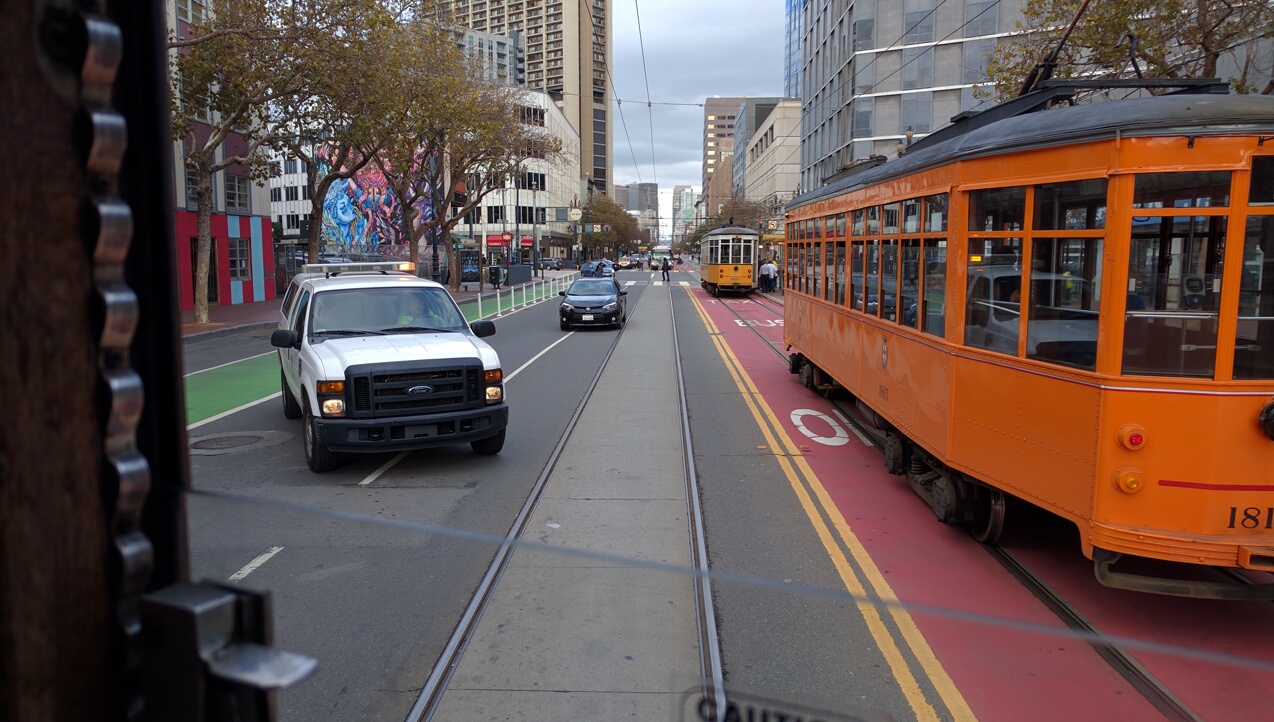Monday at 1:30, the Land Use and Transportation Committee of the San Francisco Board of Supervisors will consider a Transportation Demand Management (TDM) ordinance that will require projects larger than 10 dwelling units or 10,000 square feet to adopt stronger measures to reduce auto trips.
The new TDM proposal represents a step forward. However, it will have greater impact on the livability of San Francisco if it includes four key changes:
- Close the parking loophole. The Planning Code permits both non-accessory and accessory parking in buildings throughout the city, and non-accessory parking (lots and garages) as a stand-alone use. Since all parking spaces generate auto trips, exempting non-accessory parking greatly undermines the TDM program’s effectiveness.
- Link building TDM goals to neighborhood goals. In many neighborhoods, there is already no room for more auto traffic. As the City takes necessary steps to improve walking, cycling, and transit, the road space available for private cars will decrease. For neighborhoods like Downtown, SoMa, and Hayes Valley where streets are already congested and lots of new development is permitted, the TDM ordinance as currently proposed won’t prevent traffic gridlock. Trip-reduction targets for developments must be based on current and future neighborhood roadway capacity and transportation goals, not on a rate derived from past developments.
- Strengthen pro-walking strategies. The City’s menu of TDM options includes just one point for any and all walking improvements, and should include more points and options to encourage this most basic form of transportation.
- Eliminate Parking requirements. Research affirms that reducing parking is the most potent TDM tool. The City should do away with minimum parking requirements, particularly in Neighborhood Commercial districts and transit corridors.
Strengthening this ordinance will help San Francisco build on a history of effective TDM measures.
For example, in the 1980s, the Downtown Plan limited parking in new buildings, and required large office buildings to provide benefits like transit passes, carpooling, and trip planning for workers. In the last decade, neighborhood plans eliminated parking requirements in certain transit-rich areas of the city, and the City expanded its bicycle network. This is critical not just because parking is directly linked with driving, but also because a parking spot can cost $80,000 or more to build, making SF less affordable to live in and taking up space that otherwise could have been used for housing.
The bad news is the City continues to undermine TDM goals, with street designs that compromise on the safety of people walking and biking, maintaining minimum parking requirements for buildings in most of the city. The City also allows buses and trains to sit stuck in traffic and it subsidizes public parking. This has to stop.
By adopting stronger changes, the City’s TDM program can help make San Francisco a safer, healthier, greener, and more equitable city.
Tom Radulovich is executive director of Livable City and Nicole Ferrara is executive director of Walk San Francisco. Livable City has successfully advocated for reduced parking requirements in several neighborhoods, secured off-street bicycle parking in new buildings, and ‘unbundled’ parking from the sale or lease of new units. Walk San Francisco works for street designs that make walking attractive, interesting, inviting and safe.






